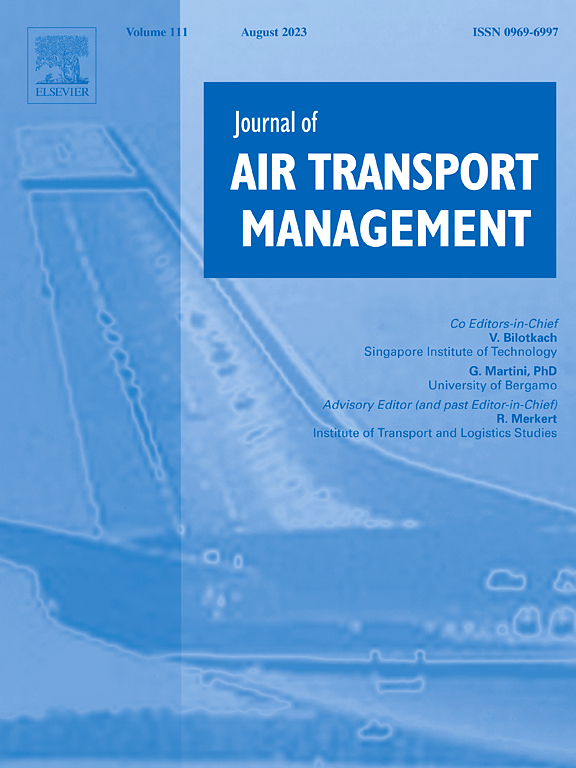Pilots’ training backgrounds affecting the attribution of event causal factors and airline safety management
IF 3.6
2区 工程技术
Q2 TRANSPORTATION
引用次数: 0
Abstract
For safety management in diverse aviation operators, it is necessary to investigate how different cultural factors interact in flight operations. Whilst prior studies have evaluated between-group cultural differences, there remains a research gap on whether within-group subcultural differences challenge the assimilation of people into the safety culture of the wider group. Cultural differences in how causal factors are perceived in the context of systemic safety deficiencies can affect the implementation of safety management strategies. In the present study, pilots from airline-sponsored, self-funded, and ex-military initial training backgrounds were invited to categorise an identical set of aircraft accident causal factors using the Human Factors Analysis and Classification System (HFACS). Results from 121 participants found significant differences amongst the three groups in the attribution of human factors conditions to organisational-level and supervisory-level categories. Significant associations amongst HFACS categories also differed amongst the three professional groups, with a considerable number of same-level associations found between ‘Preconditions for Unsafe Acts’ at the same level. Familiarity with organizational cultures was considered to impact the perception of causal factors. The finding of same-level associations presents a new contribution to the theoretical basis of the HFACS taxonomy, calling for a conceptual change in the directionality of causal sequences. The results suggest that the direction of safety remedies for different parts of the organisation is dependent on perceived relevance, which differs amongst subcultural groups. Findings are relevant to industry, particularly international airlines with diverse employee subcultural groups, for the implementation of safety management systems.

飞行员训练背景对事件成因归因及航空公司安全管理的影响
对于不同航空运营商的安全管理,有必要研究不同文化因素在飞行运营中的相互作用。虽然先前的研究已经评估了群体间的文化差异,但对于群体内亚文化差异是否会挑战人们融入更广泛群体的安全文化,研究仍然存在空白。在系统性安全缺陷的背景下,如何感知因果因素的文化差异会影响安全管理策略的实施。在本研究中,来自航空公司赞助、自费和前军事初始训练背景的飞行员被邀请使用人为因素分析和分类系统(HFACS)对一组相同的飞机事故原因进行分类。来自121名参与者的结果发现,在组织层面和监管层面的人为因素条件归因方面,三组之间存在显著差异。HFACS类别之间的显著关联在三个专业群体之间也有所不同,在同一级别的“不安全行为的先决条件”之间发现了相当多的同级关联。对组织文化的熟悉程度被认为会影响对因果因素的感知。同水平关联的发现对HFACS分类的理论基础提出了新的贡献,要求对因果序列的方向性进行概念上的改变。研究结果表明,组织不同部分的安全补救措施的方向取决于感知相关性,这在亚文化群体中是不同的。研究结果与行业相关,特别是具有不同员工亚文化群体的国际航空公司,以实施安全管理系统。
本文章由计算机程序翻译,如有差异,请以英文原文为准。
求助全文
约1分钟内获得全文
求助全文
来源期刊

Journal of Air Transport Management
TRANSPORTATION-
CiteScore
12.40
自引率
11.70%
发文量
97
期刊介绍:
The Journal of Air Transport Management (JATM) sets out to address, through high quality research articles and authoritative commentary, the major economic, management and policy issues facing the air transport industry today. It offers practitioners and academics an international and dynamic forum for analysis and discussion of these issues, linking research and practice and stimulating interaction between the two. The refereed papers in the journal cover all the major sectors of the industry (airlines, airports, air traffic management) as well as related areas such as tourism management and logistics. Papers are blind reviewed, normally by two referees, chosen for their specialist knowledge. The journal provides independent, original and rigorous analysis in the areas of: • Policy, regulation and law • Strategy • Operations • Marketing • Economics and finance • Sustainability
 求助内容:
求助内容: 应助结果提醒方式:
应助结果提醒方式:


